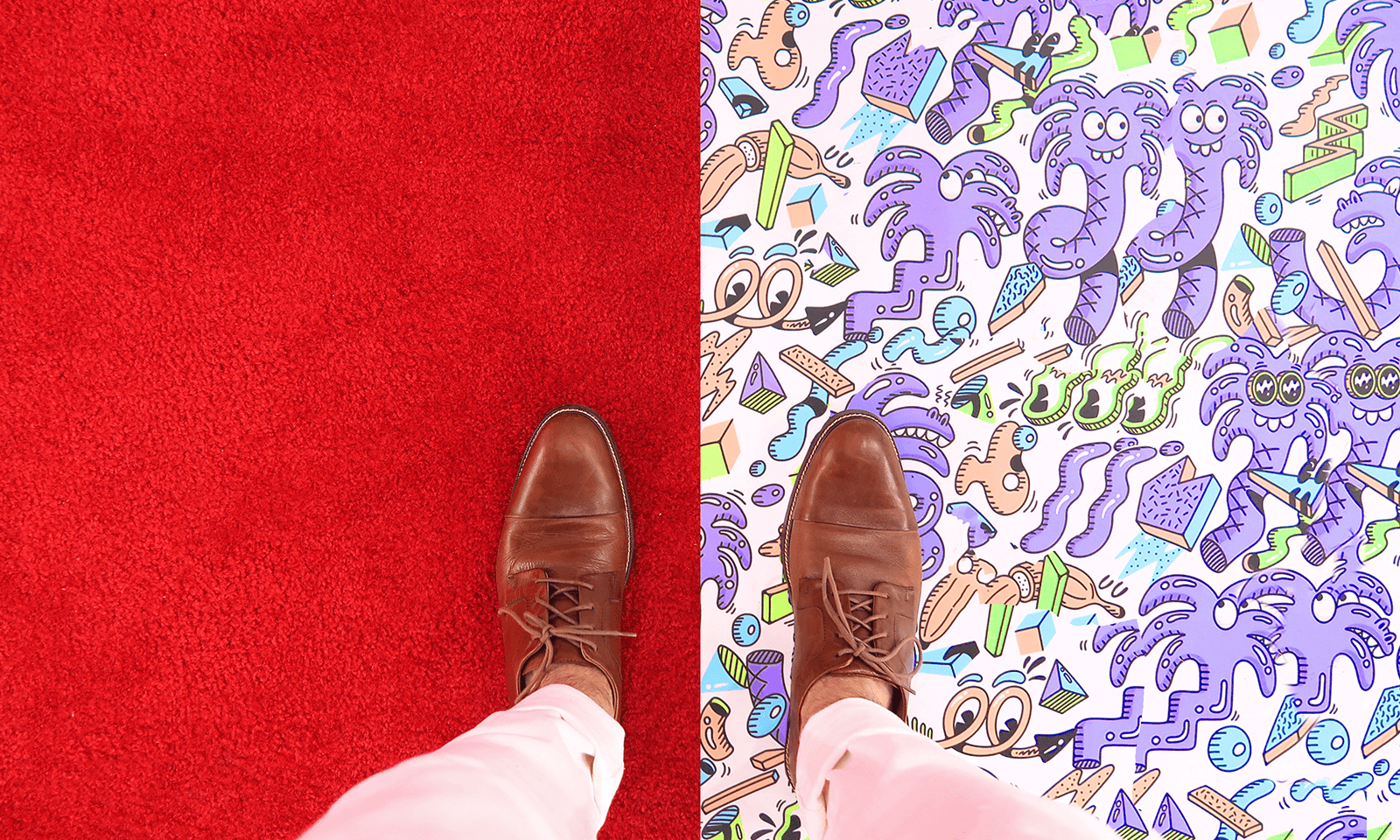
Brick-and-mortar and ecommerce businesses are vying for the same eyes and those eyes happen to be online more than anywhere else. A study from Nielsen found that the average American adult spends more than 11 hours a day interacting with digital media.
If you want to succeed in 2019 and beyond, you need a creative digital marketing strategy that doesn’t just reach your target audience, but engages them. To accomplish this, brands are turning to visual content like images, illustrations, interactive infographics and videos.
Here are four creative ways for brands to use visual content online:
1. Use Visual Content to Increase Your Website’s UX
When we think of visual content, we often revert to the image we posted on Facebook or the video we shared on YouTube — we overlook the impact that visual content has on the user experience (UX) on our website. However, your website is mostly created from visual content and design elements — not the web copy.
Your layout, color scheme, static images, interactive features and other graphic design elements are the driving force behind the user experience of your site. Make strategic choices with the visual content you display on your website. For instance, choosing the appropriate color scheme can increase your brand recognition by up to 80 percent.
While visual content can improve the UX of your website, it can do equal damage if not executed correctly. This negative side is illustrated best with unresponsive visual content. Statista estimates that 52 percent of worldwide internet use is conducted on a mobile device. If your web design is unresponsive, meaning it’s not mobile-friendly, you can expect to lose roughly 74 percent of your mobile visitors.
Your layout, color scheme, static images, interactive features and other graphic design elements are the driving force behind the user experience of your site.
Don’t neglect the importance that visual content has on the user experience of your website.
2. Use Visual Content to Repurpose High-Impact Blog Content
If you want an innovative strategy for using visual content, look no further than your own blog. Do you have a blog article that drives a lot of traffic? Maybe you posted an eBook or whitepaper about your industry or company.
Repurposing content is an affordable strategy that also mitigates risks.
If you have an engaging, high-impact piece of content on your blog, repurpose it into a video or infographic and share the new format on your website. You can even update the original post with new visual components and republish it.
This creative strategy is known as content repurposing, and it allows brands to stretch the ROI from the original piece of content. Repurposing content is an affordable strategy that also mitigates risks. For instance, if you take the article that generated the most engagement in 2018 and repurpose it into an infographic, you can expect similar engagement on the new posts because it covers a topic that has proven itself already.
Repurposing content isn’t just reserved to text-based assets. You can take that infographic you just created and slice it up into separate images for a SlideShare, video, or as a series of social posts.
Sometimes getting creative with your visual content means reverting to topics and content that already work well.
3. Use Visual Content for SEO
Search engine optimization (SEO) is a marketing discipline that uses a variety of onsite and offsite techniques to improve a website’s organic rankings for specific search queries. The goal of SEO is to drive organic traffic from search engines for targeted keywords relevant to specific pages on your website.
Many social algorithms favor posts with images and videos.
Surprisingly, you can use visual content to improve your SEO significantly.
- Use keyword-optimized image titles, alt text and descriptions to reiterate the page’s relevance to search engine crawlers.
- Use engaging images, illustrations and interactive content to increase the session time on your pages.
- Use infographics as linkable assets to grow your inbound link profile.
- Use video content with an .SRT file to take advantage of how disproportionally search engines weight videos (well-optimized videos can increase your chance of getting on the front page of Google by as much as a factor of 53).
4. Use Visual Content to Improve Social Engagement
As you might imagine, one of the best uses of visual content is to improve the results of social media posts on sites like Facebook, Instagram and Twitter. Social engagement is easily the most obvious example of how powerful visual content can be for a brand — 80 percent of marketers say it has improved their social media marketing initiatives.
Images, gifs, videos and other dynamic content on social media helps break the monotony of text-driven posts. Social users love visual content — in fact, a great visual post is 40-times more likely to get shared than other content on social media.
80 percent of marketers say it [visual content] has improved their social media marketing initiatives.
In the scroll-based world of social media, the stunning image, creative illustration or engaging video can give pause to your target audience long enough to drive home your message — which explains why 64 percent of consumers make a purchase after viewing a branded video. If you run an ecommerce business, try using product videos to drive visitors from social to your product pages.
Your followers aren’t the only ones who enjoy visual content — social media sites prefer visual assets over text-only content. Many social algorithms favor posts with images and videos. Therefore, you can increase your social reach and engagement with visual content.
...64 percent of consumers make a purchase after viewing a branded video.
Brands are always looking for new ways to engage their target audience online. While copy is still important, visual content provides new opportunities for brands. Get creative with how you use visual content, and you might actually improve your user experience, consumer engagement — and most importantly — bottom line.











